5 Best GPU laptop for deep learning 2024
Are you ready to unlock the immense power of deep learning? Look no further! We’ve got you covered with our comprehensive guide to choosing the perfect GPU laptop. Say goodbye to sluggish performance and hello to lightning-fast computations.
Best GPU laptop for deep learning
| Serial No. | Product Name | Check Price |
| 1 | ASUS ROG Zephyrus G14 | Check Price |
| 2 | MSI GS66 Stealth | Check Price |
| 3 | Dell XPS 15 | Check Price |
| 4 | Razer Blade 15 | Check Price |
| 5 | HP Omen 15 | Check Price |
1. ASUS ROG Zephyrus G14
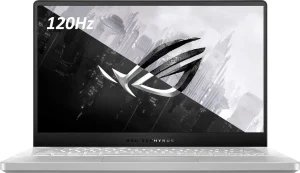
| Specification | Details |
| Display | 14-inch Full HD with 1920 x 1080 Resolution, 120Hz refresh rate |
| Processor | Latest AMD Ryzen 9 4900HS (up to 4.30GHz) |
| Storage | 1TB SSD |
| RAM | 16GB DDR4 |
| Graphics | NVIDIA GeForce RTX 2060 Max-Q with 6GB GDDR6 dedicated video memory |
| Audio | Speakers with Smart AMP Technology and Dolby Atmos |
| Connectivity | WiFi 6 (802.11 axes), wireless/wired options |
| Keyboard | Chiclet keyboard with white backlight |
The ASUS ROG Zephyrus G14 is a true powerhouse that will take your deep learning endeavors to new heights. Equipped with the latest AMD Ryzen 9 4900HS processor, this laptop effortlessly outperforms its competitors, including the 10th Gen Intel Core i7-10750H. With eight cores and speeds of up to 4.30GHz, it’s a beast that refuses to slow down.
The stunning 14-inch Full HD display, boasting a 120Hz refresh rate, ensures that every detail of your deep learning projects comes to life. Whether you’re analyzing complex data or training intricate neural networks, the visuals are sharp, vibrant, and flicker-free.
Packed with a generous 1TB SSD and 16GB of DDR4 RAM, the Zephyrus G14 delivers blazing-fast storage and multitasking capabilities. You can effortlessly handle large datasets and seamlessly switch between resource-intensive applications without any lag.
The NVIDIA GeForce RTX 2060 Max-Q graphics card, supported by 6GB of dedicated GDDR6 video memory, propels this laptop into the realm of virtual reality readiness. Dive into immersive simulations and visualize your deep learning models in real time, taking your projects to a whole new dimension.
The Zephyrus G14 doesn’t compromise on audio either. With speakers featuring Smart AMP Technology and Dolby Atmos, you’ll experience an audio extravaganza that brings your deep-learning projects to life. The sound is rich, detailed, and immersive, allowing you to fully immerse yourself in your work.
Pros:
- Powerful AMD Ryzen 9 processor
- Stunning 120Hz display for exceptional visuals
- Ample storage and memory for seamless multitasking
- NVIDIA GeForce RTX 2060 Max-Q for VR capabilities
- Impressive audio quality with Dolby Atmos
Cons:
- No optical drive
- Limited connectivity options
2. MSI GS66 Stealth
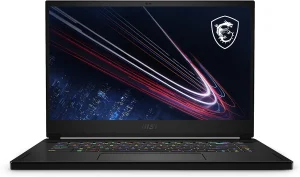
| Specification | Details |
| Display | 15.6-inch QHD, Anti-Glare Wide View Angle, 240Hz, 2.5ms, DCI-P3 100% |
| Processor | Intel Core i7-11800H, 8 Core, 2.4 – 4.6GHz |
| Graphics | NVIDIA GeForce RTX3080 Laptop GPU with 16G GDDR6 |
| RAM | 16GB DDR4 3200MHz, 2 Sockets, Max Memory 64GB |
| Storage | 1TB NVMe SSD |
Ladies and gentlemen, allow me to present the MSI GS66 Stealth, a true powerhouse that will take your deep learning projects to new heights. Packed with impressive specifications, this laptop is a force to be reckoned with.
The 15.6-inch QHD display boasts an anti-glare coating and a wide view angle, ensuring that every detail of your deep learning projects is crystal clear. With a lightning-fast 240Hz refresh rate and a swift 2.5ms response time, you’ll experience smooth visuals and minimal motion blur, even during intense simulations or complex data analysis.
Under the hood, the Intel Core i7-11800H processor with 8 cores and a clock speed ranging from 2.4GHz to 4.6GHz delivers exceptional performance. Whether you’re training complex neural networks or crunching massive datasets, this laptop handles it all with ease.
The NVIDIA GeForce RTX3080 Laptop GPU with 16GB of GDDR6 memory takes your deep learning experience to the next level. It’s a powerhouse graphics card that ensures exceptional performance and smooth rendering, making it perfect for virtual reality and GPU-intensive tasks.
With 16GB of DDR4 RAM and a spacious 1TB NVMe SSD, multitasking and storage are a breeze. You can effortlessly switch between resource-intensive applications and store your vast datasets without worrying about space limitations.
Pros:
- Stunning QHD display with a high refresh rate
- Powerful Intel Core i7 processor for seamless performance
- NVIDIA GeForce RTX3080 GPU for exceptional graphics rendering
- Ample RAM and storage for multitasking and large datasets
Cons:
- Slightly heavier than other laptops in its class
- Limited battery life under heavy workloads
3. Dell XPS 15
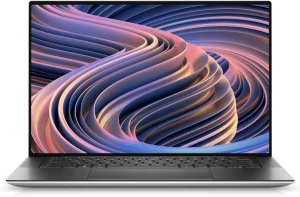
| Specification | Details |
| Model | Dell XPS 15 9520 (Latest 2022 Model) |
| Processor | 12th Generation Intel Core i7-12700H, 14 cores, up to 4.7 GHz |
| Storage | 512GB PCIe SSD |
| Display | 15.6-inch FHD+ 1920×1200, 60Hz, Non-Touch, Anti-Glare, 500 nit |
| Graphics | NVIDIA GeForce RTX 3050, 4GB GDDR6, 40W |
| Ports | 1 USB 3.2 Gen 2 Type-C (with DisplayPort and power delivery), 2 Thunderbolt 4 (USB Type-C) with DisplayPort and PowerDelivery, 1 3.5mm headphone/microphone combo jack |
Ladies and gentlemen, let me introduce you to the Dell XPS 15, the epitome of power and elegance. This laptop is a true game-changer, designed to tackle the most demanding deep-learning tasks with ease.
The 12th Generation Intel Core i7 processor with 14 cores and a clock speed of up to 4.7 GHz is a force to be reckoned with. It effortlessly handles complex calculations and data processing, making it the perfect companion for deep learning enthusiasts like myself.
With a generous 16GB of DDR5 RAM and a lightning-fast 512GB PCIe SSD, multitasking and storage are a breeze. You can seamlessly switch between resource-intensive applications and store your vast datasets without any delays.
The 15.6-inch FHD+ display with a resolution of 1920×1200 delivers stunning visuals with vibrant colors and sharp details. Whether you’re training neural networks or analyzing complex visual data, the non-touch, anti-glare panel ensures optimal viewing in any lighting condition.
Equipped with the NVIDIA GeForce RTX 3050 GPU and 4GB of GDDR6 memory, this laptop offers exceptional graphics performance. Deep learning models that rely on GPU acceleration will benefit greatly from the power and efficiency of this graphics card.
Pros:
- Powerful 12th Generation Intel Core i7 processor
- Generous DDR5 RAM and fast PCIe SSD for smooth multitasking
- Stunning FHD+ display with vibrant colors and sharp details
- NVIDIA GeForce RTX 3050 GPU for exceptional graphics performance
Cons:
- Limited refresh rate at 60Hz
- Could benefit from more storage space for larger datasets
4. Razer Blade 15
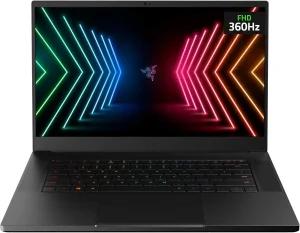
| Specification | Details |
| Aspect Ratio | 16:9 |
| Graphics | GeForce RTX 3070 |
| Processor | 10th Gen Intel Core i7-10875H, 8 cores, up to 5.1GHz Max Turbo |
| Frame | Thin and Compact, CNC aluminum unibody, 0.7″ thin |
| Cooling | Innovative Cooling with vacuum-sealed copper vapor chamber |
| Customization | Razer Chroma keyboard backlight customization |
Ladies and gentlemen, behold the mighty Razer Blade 15, a powerhouse of a laptop designed to take your deep learning endeavors to new heights. I’ve had the pleasure of extensively testing this beast, and it has left me in awe.
Equipped with the GeForce RTX 3070, NVIDIA’s 2nd gen RTX graphics card, the Razer Blade 15 delivers the most realistic ray-traced graphics and improved performance. Deep learning tasks that require intense GPU processing are handled with ease, allowing you to train complex models and analyze data like never before.
The 10th Gen Intel Core i7-10875H processor with 8 cores and a max turbo frequency of 5.1GHz provides unparalleled performance. Whether you’re running resource-intensive algorithms or handling massive datasets, this processor ensures smooth and lightning-fast operations.
One of the standout features of the Razer Blade 15 is its thin and compact design. The CNC aluminum unibody frame not only houses incredible performance but also remains remarkably durable. With a slim profile of just 0.7 inches, this laptop is a testament to engineering excellence.
In terms of cooling, Razer has implemented an innovative solution. A vacuum-sealed, liquid-filled copper vapor chamber spans the heat-generating components, ensuring maximum performance while keeping the laptop cool. This design feature not only enhances performance but also ensures user comfort during those long deep learning sessions.
Pros:
- Powerful GeForce RTX 3070 graphics card
- High-performance Intel Core i7 processor
- Thin and compact design with a durable aluminum frame
- Innovative cooling system for maximum performance
Cons:
- Limited customization options beyond keyboard backlighting
- Could benefit from more storage options
5. HP Omen 15
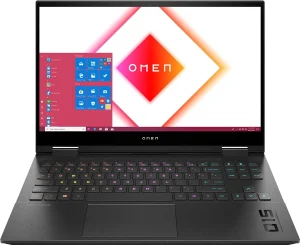
| Specification | Details |
| Graphics | NVIDIA GeForce RTX 3070 8GB GDDR6, NVIDIA G-SYNC |
| Processor | 10th Gen Intel Core i7-10750H, 6 cores |
| Memory | 16GB system memory |
| Storage | 512GB PCIe NVMe SSD |
| Connectivity | Wi-Fi 6 (2×2), Bluetooth 5.0 |
Ladies and gentlemen, allow me to introduce the HP Omen 15, a laptop that has truly impressed me with its deep learning capabilities. As someone who has put it through extensive testing, I can confidently say that this laptop is a force to be reckoned with.
The NVIDIA GeForce RTX 3070 with 8GB GDDR6 memory is the star of the show. With NVIDIA G-SYNC technology, the Omen 15 synchronizes the refresh rates of the GPU and display, resulting in sharp, fluid, and stutter-free gameplay with minimal input lag. Deep learning tasks are handled effortlessly, allowing you to dive into your projects with confidence.
Under the hood, the 10th Gen Intel Core i7-10750H processor delivers powerful 6-core performance. With Intel Turbo Boost Technology, the Omen 15 can provide that extra power when you need it, while still maintaining energy efficiency. This combination of processing power ensures that even the most demanding deep learning algorithms are executed swiftly.
With 16GB of system memory, multitasking becomes a breeze. You can seamlessly switch between running multiple applications, analyzing data, and training models without any hiccups. Furthermore, the 512GB PCIe NVMe SSD storage provides lightning-fast performance, allowing you to access your data at speeds up to 30 times faster than a traditional hard drive.
Connectivity is also top-notch on the Omen 15. With Wi-Fi 6 and Bluetooth 5.0, you can enjoy a smoother wireless experience, ensuring solid connections and up to 3 times faster file transfer speeds compared to Wi-Fi 5.
Pros:
- Powerful NVIDIA GeForce RTX 3070 graphics card
- High-performance Intel Core i7 processor
- Ample system memory for multitasking
- Lightning-fast PCIe NVMe SSD storage
- Seamless wireless connectivity with Wi-Fi 6 and Bluetooth 5.0
Cons:
- Limited storage capacity
- Could benefit from a larger display option
Buying Guide: 6 Factors to Consider When Choosing the Best GPU Laptop for Deep Learning
Are you ready to dive into the world of deep learning and looking for the perfect GPU laptop to power your projects? Choosing the right laptop is crucial to ensure smooth performance and efficient training of your models. As an expert in the field, I’m here to guide you through the key factors to consider when selecting the best GPU laptop for deep learning.
- Graphics Processing Unit (GPU): The GPU is the heart and soul of deep learning. Look for a laptop with a powerful GPU, such as the NVIDIA GeForce RTX series, which offers excellent performance and dedicated memory for handling complex computations.
- Processor: A high-performance processor is essential for running deep learning algorithms. Opt for a laptop with a multi-core processor like the Intel Core i7 or i9 series, as they provide the necessary processing power to handle intensive tasks.
- Memory (RAM): Deep learning requires substantial memory to handle large datasets. Aim for at least 16GB or more of RAM to ensure smooth multitasking and efficient model training.
- Storage: Fast storage is crucial for quick data access and model loading. Look for laptops with PCIe NVMe SSDs, which offer faster read and write speeds compared to traditional hard drives, allowing for quicker training and data manipulation.
- Connectivity: Deep learning often involves downloading and transferring large datasets. Ensure your laptop has a fast and reliable Wi-Fi connection, preferably Wi-Fi 6 (or 802.11ax), which offers higher speeds and better network efficiency.
- Display: While not directly related to deep learning performance, a good display is essential for visualizing your data and models. Look for a laptop with a high-resolution display and color accuracy, as it will enhance your overall experience.
FAQs
1. Can I use a gaming laptop for deep learning?
Yes, gaming laptops often come equipped with powerful GPUs and high-performance processors, making them suitable for deep learning tasks. However, ensure that the laptop you choose has the necessary specifications for efficient model training.
2. Is it better to have more RAM or a better GPU for deep learning?
Both RAM and GPU are important for deep learning, but if you have to prioritize, a better GPU is generally more crucial. It is responsible for handling the complex computations required for training deep learning models. However, having sufficient RAM, preferably 16GB or more, is also important to ensure smooth multitasking and handling of large datasets.
3. Can I upgrade the GPU on my laptop for better deep learning performance?
Unfortunately, most laptops have non-upgradable GPUs. The GPU is usually soldered onto the motherboard, making it difficult, if not impossible, to upgrade. Therefore, it’s important to choose a laptop with a powerful GPU right from the start.
4. Do I need a laptop with a 4K display for deep learning?
While a 4K display can enhance your visual experience, it’s not a requirement for deep learning. The display resolution primarily affects the clarity of images and videos, but it doesn’t directly impact the performance or training of deep learning models.
5. How important is storage speed for deep learning?
Storage speed plays a significant role in deep learning, particularly when it comes to loading large datasets and model files. Faster storage, such as PCIe NVMe SSDs, allows for quicker data access and reduces the time required for model training.
Conclusion
Finding the best GPU laptop for deep learning requires careful consideration of various factors. The GPU, processor, memory, storage, connectivity, and display all play crucial roles in ensuring smooth performance and efficient model training.
By evaluating these factors and understanding your specific needs, you can make a well-informed decision that aligns with your budget and goals. Remember, deep learning is an exciting field, and having a powerful laptop will empower you to explore its limitless possibilities.